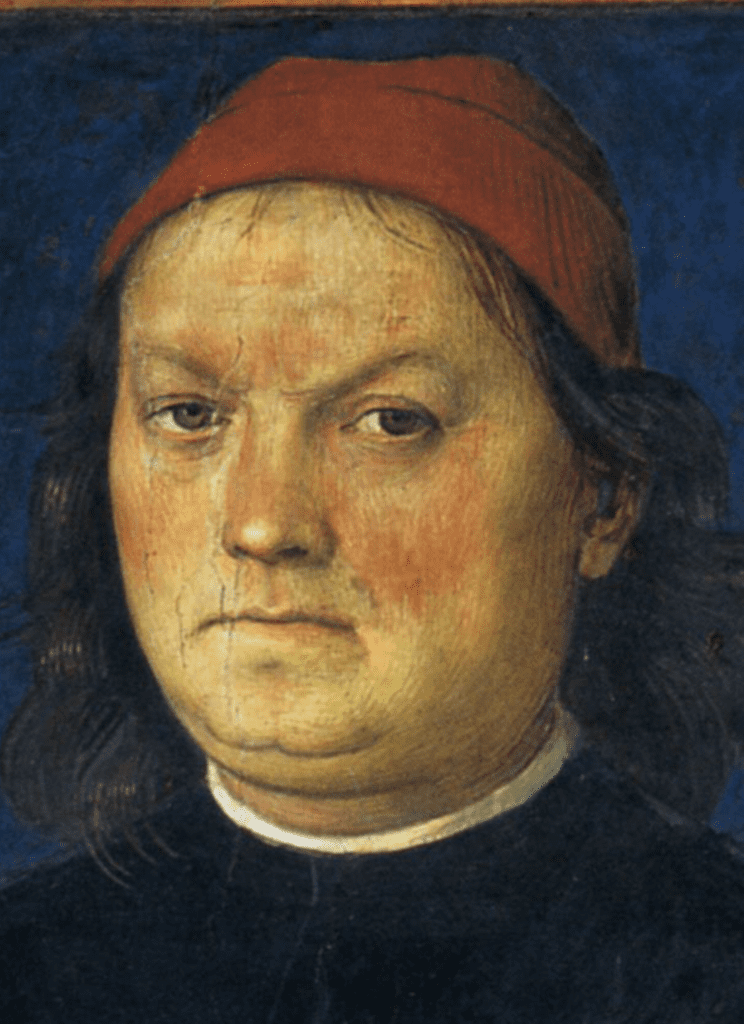Pietro di Cristoforo Vannucci, known as "Il Perugino"
«His angels are worthy companions of those pious Madonnas, softly modeled but not without strength, radiant with tenderness who live in an atmosphere of bright and shiny light like that of spring days.»»
(Guido Menasci)


Pietro di Cristoforo Vannucci, known as “Il Perugino” (1448 Città della Pieve – 1523 Fontignano), “The best master of Italy” Agostino Chigi writes. He was considered the greatest of all painters of his time during the renewal of Italian art, the most important moment of the Renaissance, between the fifteenth and sixteenth centuries.
At the end of the fifteenth century he was considered to be the first painter in Italy. Vasari considered him to be the master of a new way of painting: “his painting was so popular that they came from Spain, France and Germany” to observe and imitate it. He was accustomed to the repetitive use of his models. At the time the replication of a subject was not considered as a lack of creativity but as a confirmation of his success; this often was a requirement made by the client himself.
Il Perugino manages to give his characters an intense communication and bright and colourful vibrations. His compositions are exceptionally well balanced; the characters, the landscapes, the perspectives, all is surrounded by air and light, everything between earth and sky calls for harmony, everything takes part in the action.
He achieved success thanks to Pope Sixtus IV who, in 1482, wanted him in the Sistine building site to direct most of the frescoes, signing masterpieces such as “The Baptism of Jesus” and “Consignment of the Keys”. Luca Signorelli was his assistant on that occasion, to whom the scene with the “Death and Testament of Moses” was commissioned.
Il Perugino was the first artist-entrepreneur, simultaneously managing two workshops, one in Florence and one in Perugia, from which numerous pupils emerged, including Raffaello Sanzio who would take up the master’s models and embody the highest expression of the Renaissance ideal. The Divine Painter died in 1523 in Fontignano, probably while he was painting “The Madonna with Child” in the local church.
At the end of the fifteenth century he was considered to be the first painter in Italy. Vasari considered him to be the master of a new way of painting: “his painting was so popular that they came from Spain, France and Germany” to observe and imitate it. He was accustomed to the repetitive use of his models. At the time the replication of a subject was not considered as a lack of creativity but as a confirmation of his success; this often was a requirement made by the client himself.
Il Perugino manages to give his characters an intense communication and bright and colourful vibrations. His compositions are exceptionally well balanced; the characters, the landscapes, the perspectives, all is surrounded by air and light, everything between earth and sky calls for harmony, everything takes part in the action.
He achieved success thanks to Pope Sixtus IV who, in 1482, wanted him in the Sistine building site to direct most of the frescoes, signing masterpieces such as “The Baptism of Jesus” and “Consignment of the Keys”. Luca Signorelli was his assistant on that occasion, to whom the scene with the “Death and Testament of Moses” was commissioned.
Il Perugino was the first artist-entrepreneur, simultaneously managing two workshops, one in Florence and one in Perugia, from which numerous pupils emerged, including Raffaello Sanzio who would take up the master’s models and embody the highest expression of the Renaissance ideal. The Divine Painter died in 1523 in Fontignano, probably while he was painting “The Madonna with Child” in the local church.
